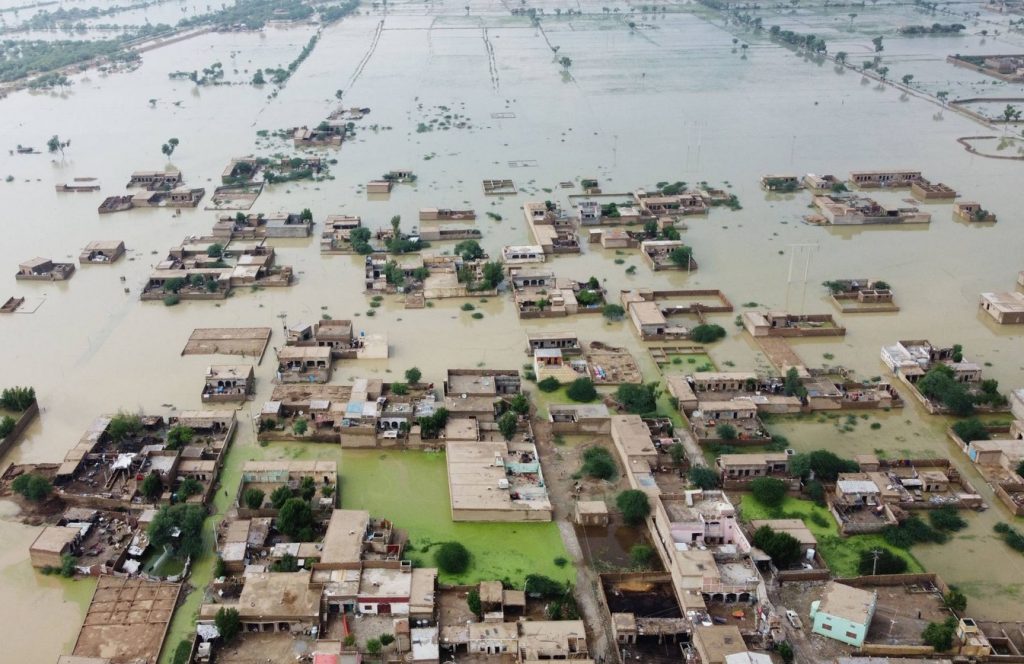Forget economic woes, Pakistan’s biggest problem right now is water
Tue 4 Oct 2022, By Murtaza Hashwani
It’s true that the country has been fighting for survival due to the rise in commodity and energy prices, exacerbating debt problems and the devastation of floods. The consensus among analysts is that Pakistan has dodged a default-like situation through bringing in significant austerity and black belt-tightening. Things are tough but salvable and we haven’t reached the catastrophic levels like Sri Lanka yet.
However, what should be of much greater concern is another life-sustaining commodity less easy to restore than money – water. The floods have further highlighted this issue which needs immediate and urgent attention. Lack of infrastructure has left a large part of the rural population underwater in the most unhygienic conditions. The rising death toll due to the floods are followed by waterborne diseases and contaminated water or in some cases complete lack of it. Despite relief funds by some of the world’s richer countries, the long-term and sustainable solution needs to be addressed.
While there’s a lot of media coverage being given to the financial challenges currently faced by Pakistan and top that the deathly floods have added to the woes as well. A recent report published by the Pakistan Institute of Development Economics (PIDE) titled: “Water Crisis in Pakistan: Manifestation, Causes and the Way Forward,” painted a bleak picture.
It flagged worrying statistics such as #Pakistan ranking 14 out of 17 “extremely high-water risk” countries in the world as it wastes one-third of available water. Additionally, the report states that more than 80 percent of the country’s population faces “severe water scarcity.” Water availability in Pakistan has plummeted from 5,229 cubic metres per inhabitant in 1962 to just 1,187 in 2017.
This crisis will not only affect Pakistan’s vital agriculture sector – which contributes 23 percent of Pakistan’s GDP and employs 42 percent of its labour force – but also poses a huge threat to energy and food security for the country that ranks fifth most populated in the world. This situation is deadly serious. There are some signs that the situation is now being tackled – and not a second too early.
In line with the Sustainable Development Goals (SDGs), Pakistan’s Vision 2025 aims at increasing water storage capacity, improving agricultural efficiency by 20 percent, and ensuring the availability of clean drinking water to all Pakistanis.
Experts stress that Pakistan needs a sound national water policy which delineates the framework for balanced socio-economic development, management, and conservation of the country’s water resources in an environment challenged by climate change.
According to the reports Pakistan is among the list of 10 most vulnerable countries of the world to climate change. Receding glaciers, unwarranted floods, rising temperature, declining water levels of the Indus river are just some of the factors responsible for this crisis.
Receding glaciers, unwarranted floods, rising temperature, declining water levels of the Indus River (pictured) are just some of the factors responsible for this crisis.
The United Nations Office for the Coordination of Humanitarian Affairs (OCHA) puts it this way:
“If prioritised, water can serve as the engine of economic growth and regional trade expansion. With agriculture being Pakistan’s major sector… and largest water consumer, it is estimated that even if a billion-dollar output is achieved for every million acre-feet of water utilised for agriculture, the water economy has the potential to increase total annual agricultural GDP to $200 billion from its current $50 billion.
“Similarly, the country has exploited only 6,500 megawatts of hydro energy generation capacity of the Indus River system which stands at a potential of generating 59,000 megawatts.”
OCHA states that to realise the potential of the country’s ‘water economy,’ a paradigm shift is urgently required at a national level where all stakeholders are engaged. I can’t stress enough that these measures shouldn’t be left for policymakers in the country. It needs collective efforts of the private sectors, NRPs living around the world.
One such innovative product that’s made a huge difference during the floods is Every Water (also known as PakVitae in Pakistan) which has been distributing sponsored water purification units to NGOs working in flood-stricken areas.
EveryWater’s patented technology, which converts dirty to water to 99.99 percent clean drinkable water in easy-to-use filters that work without power being required, has helped over 200,000 people in remote areas during flood relief so far. I am sure that if marketed widely enough they could massively bring a change to the country with vast coastal areas becoming farmable and making clean water available to the most remote of regions. Only 36 percent of the country’s population have access to safe, drinkable water, according to Pakistan Institute of Development Economics.
Therefore, such smart solutions should be able to provide some relief to the masses in the most cost-effective way. If Pakistan really wants to become one of the ten largest economies in the world by 2047, getting water resource management right is essential.







